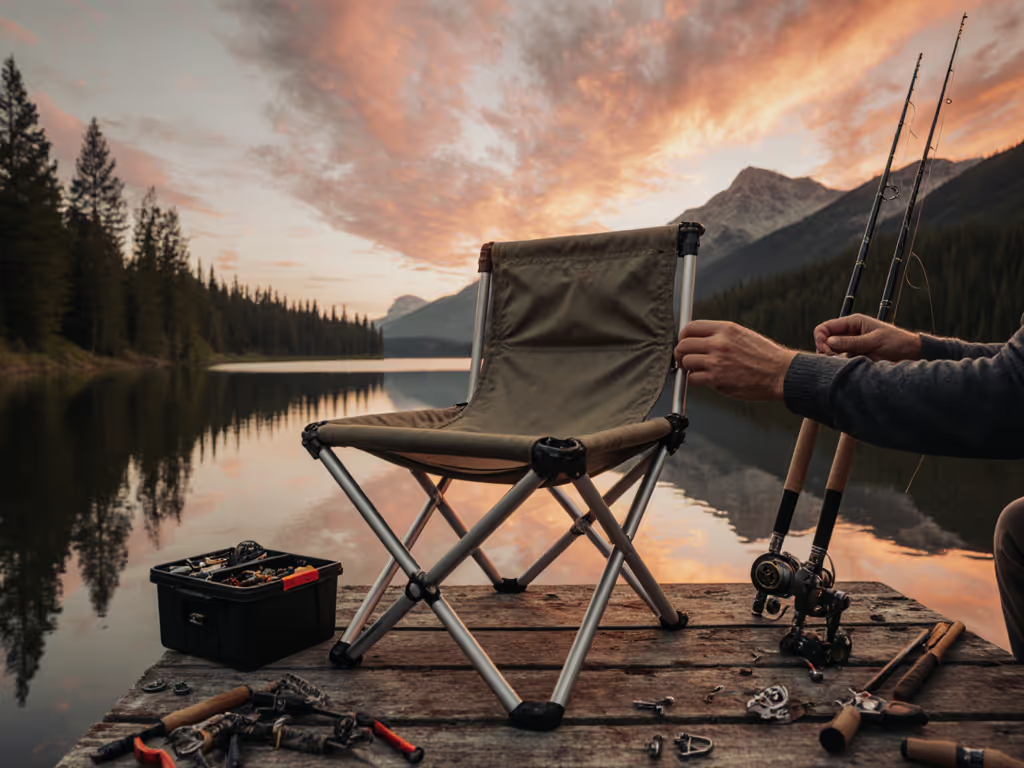
Camp Chair Geometry: How Seat Angles Beat Cushions
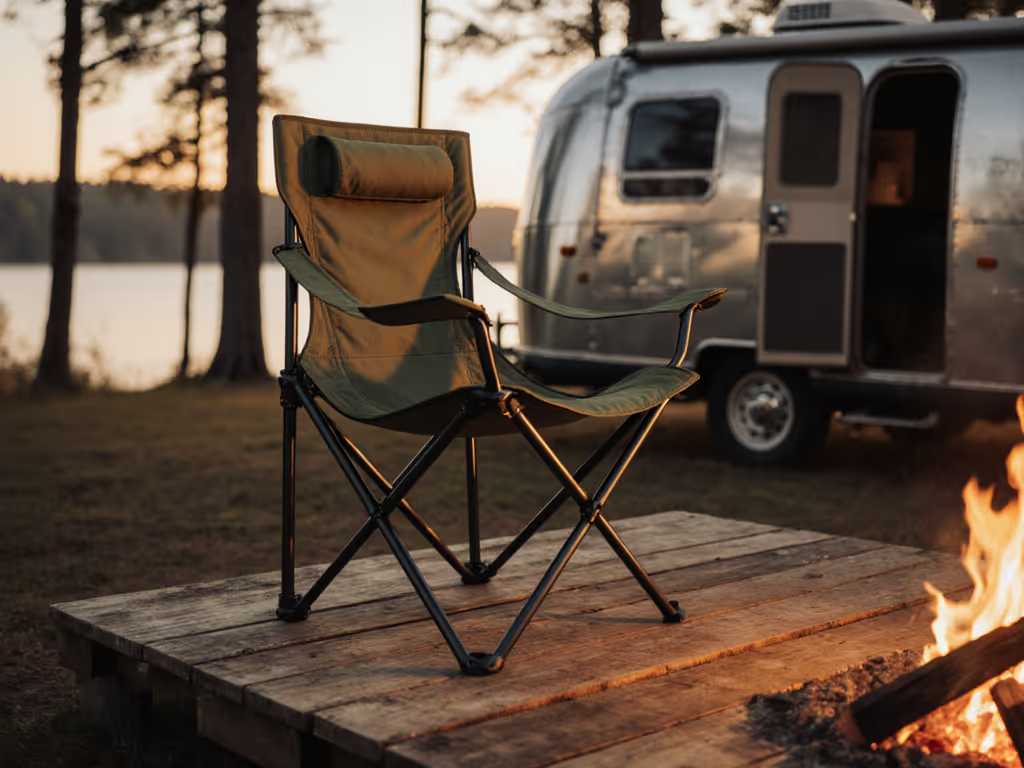
When you're researching a camping chair review that matters, or searching for the best camp furniture for your group, you're probably tired of chairs that promise "cloud-like comfort" but leave your shoulders tensed and knees aching after just one meal. Modern camping chairs have evolved beyond mere folding frames, yet most still prioritize portability over the geometry that actually creates comfort for the long-sit. As someone who measures how people interact with their outdoor furniture, I've found that true comfort isn't about plusher padding, it's about angles that work with your body, not against it. Comfort is geometry working quietly in your favor.
Why Your Back Aches Before Dinner Ends
Picture this: your group settles in for a meal after a long drive, only to find everyone shifting positions, standing up repeatedly, or avoiding leaning back. You might blame "low-quality" chairs, but the culprit is often basic geometry. Standard camping chairs typically sit at 16-18 inches from the ground, while many camp tables sit at 25-28 inches. This creates an 8-10 inch gap between your elbow and table surface, forcing you to hunch forward or stretch uncomfortably. Meanwhile, seat angles that slope too steeply (beyond 15 degrees backward) shift your weight forward onto your sit bones rather than distributing it across your thighs.
Comfort is geometry working quietly in your favor.
I learned this watching my dad during a beach campout. He kept standing mid-meal, not because he wasn't tired, but because his chair sank into the sand while the table stayed high, his shoulders stayed tensed and his knees bent at an awkward 90-degree angle. We measured the seat-to-sand drop, adjusted the table height, and added wider chair feet. Suddenly, he sat through dessert and stories. No new cushions, no redesign, just geometry calibrated to his body. For soft-ground fixes like sand feet and anti-sink pads, see our ergonomic chair upgrades guide.
Three Geometry Rules for Real Comfort
1. Seat Height Determines Your Posture
Your chair's seat height relative to your table dictates whether you'll sit comfortably for hours or spend dinner standing up. For adults, ideal seat height ranges from 17-20 inches off the ground, enough clearance for knees to bend at 90-110 degrees when feet are flat. Taller campers (over 6 feet) often need seats closer to 20 inches to avoid that "perched" feeling that strains hamstrings. The MARCHWAY Lightweight Folding High Back Camping Chair
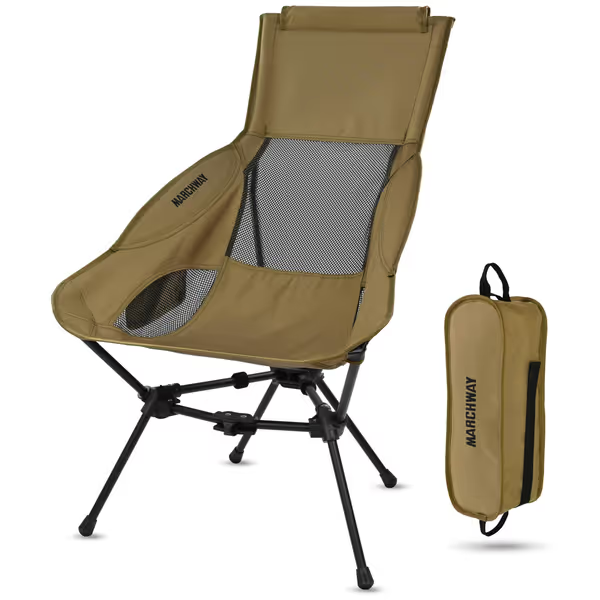
MARCHWAY Lightweight High Back Camping Chair
exemplifies this principle with its 16.75-inch seat height that aligns well with standard 27-inch camp tables.
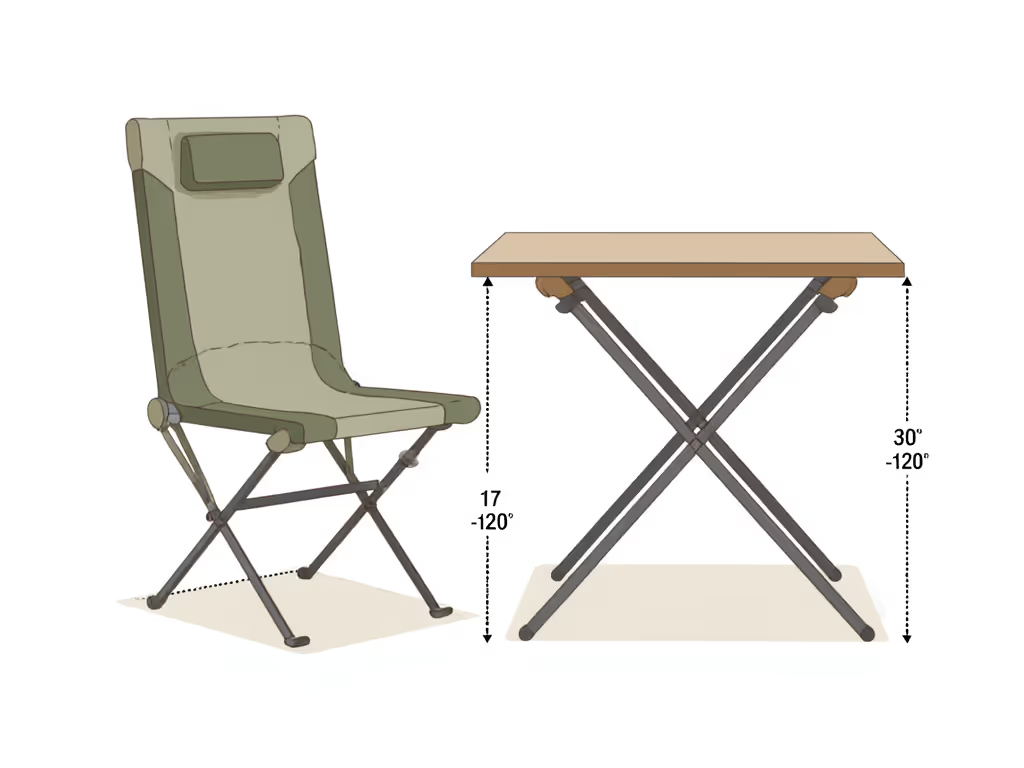
2. Back Angle Supports Your Spine (Without Slouching)
Most "comfortable" camping chairs slope the backrest too far backward (beyond 110 degrees from vertical), forcing you into a semi-reclined position that's great for lounging but terrible for dining. For seated activities like eating or games, aim for 100-105 degrees, enough recline to support your natural lumbar curve without requiring constant muscle engagement to stay upright. Notice how your shoulders relax when your backrest angle matches your spine's S-curve rather than fighting it.
3. Foot Placement Anchors Your Stability
On uneven terrain, chairs with narrow legs or small feet sink unevenly, creating instability that triggers constant micro-adjustments. Look for frames with feet that sit at least 10 inches wide at the base, the wider the stance, the more stable the chair on sand, gravel, or sloping ground. The ALPS Mountaineering King Kong chair achieves this with its quad-frame design that distributes weight across four wide-set contact points, letting you lean back without fear of tipping.
The Table-Chair Relationship That Makes or Breaks Group Comfort
The most overlooked aspect of camp comfort isn't the chair alone, it's how chair and table heights interact across your group. Families with mixed ages face this acutely: kids' chairs might align with the table, but adults sit too low, while standard chairs that work for adults leave children's feet dangling. This creates constant postural strain as people adjust to find neutral spine positions.
For group dining, aim for these metrics:
- Seat height: 17-20" for adults, 12-15" for kids 8-12
- Table height: 26-28" for standard use
- Elbow-to-table clearance: 0-2" when seated comfortably
- Knee-to-table clearance: At least 4" to avoid bumping
When these measurements align, conversation flows instead of posture. Your shoulders stay relaxed, wrists rest naturally on the table surface, and you can actually enjoy that campfire meal without counting minutes until you can stand up.
Practical Geometry Checks Before Your Next Trip
Next time you're evaluating comfy camping chairs, skip the "how plush is the fabric?" test and focus on these geometry checkpoints:
- Sit-test with purpose: Bring a camp table (or mimic one with a kitchen counter). Sit fully in the chair, your knees should bend at 90-110 degrees with feet flat, and elbows should rest comfortably on table height without slouching or reaching.
- Measure the "long-sit" factor: Time how long you can sit without shifting. True comfort emerges after 20+ minutes, when initial cushion softness gives way to structural support.
- Check angle stability: Lean back gently. If the chair feels like it might tip before you reach 105 degrees of recline, it lacks proper weight distribution geometry.
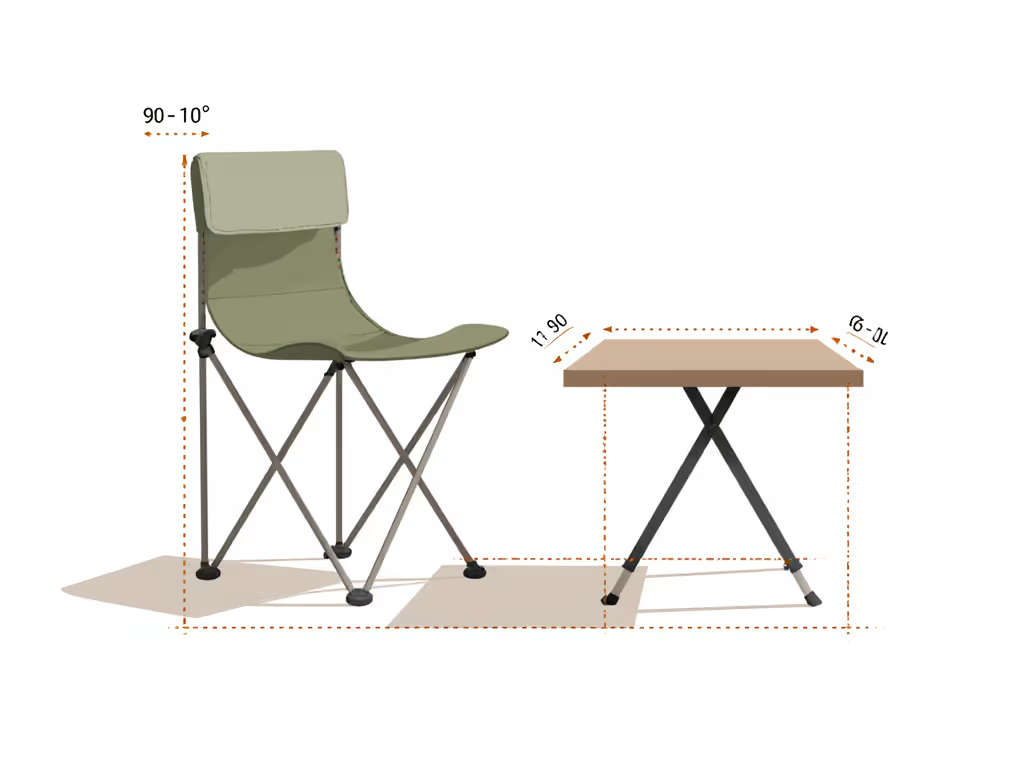
Your Action Plan for Comfort That Lasts
Don't wait for another trip where your group spends dinner standing up. Before your next outing, measure your current table height and compare it to your chair seat heights. If the gap exceeds 8 inches, consider adding chair pads or table risers to create proper alignment. For new purchases, prioritize portable seating options with documented seat heights and back angles over marketing claims about "cloud comfort." Start with our field-tested best camping chairs for models with reliable geometry and no setup surprises.
The most reliable camping chair lightweight models balance geometric precision with packability, like chairs with triangulated bases that maintain stability without excess weight. If you’re balancing ounces and comfort, compare ultralight camp chairs with standard designs before you buy. Remember: when your geometry aligns, you won't need gimmicks to stay comfortable. You'll simply settle in, conversation flowing, while the sunset deepens (geometry over gimmicks, every time).
Related Articles

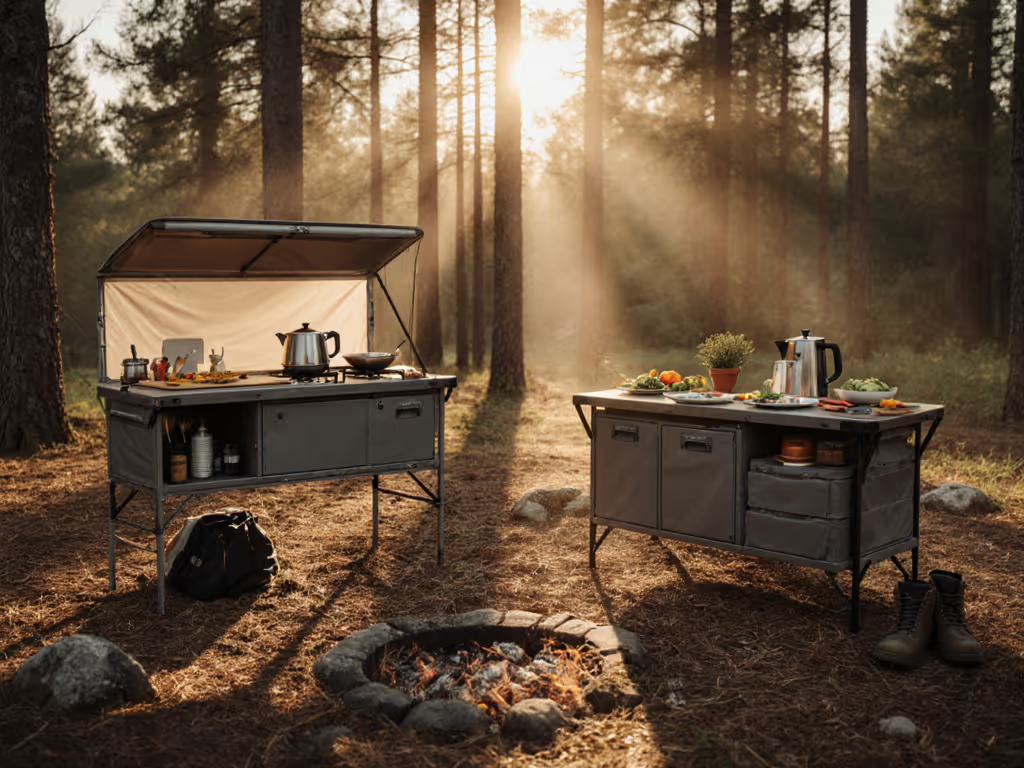
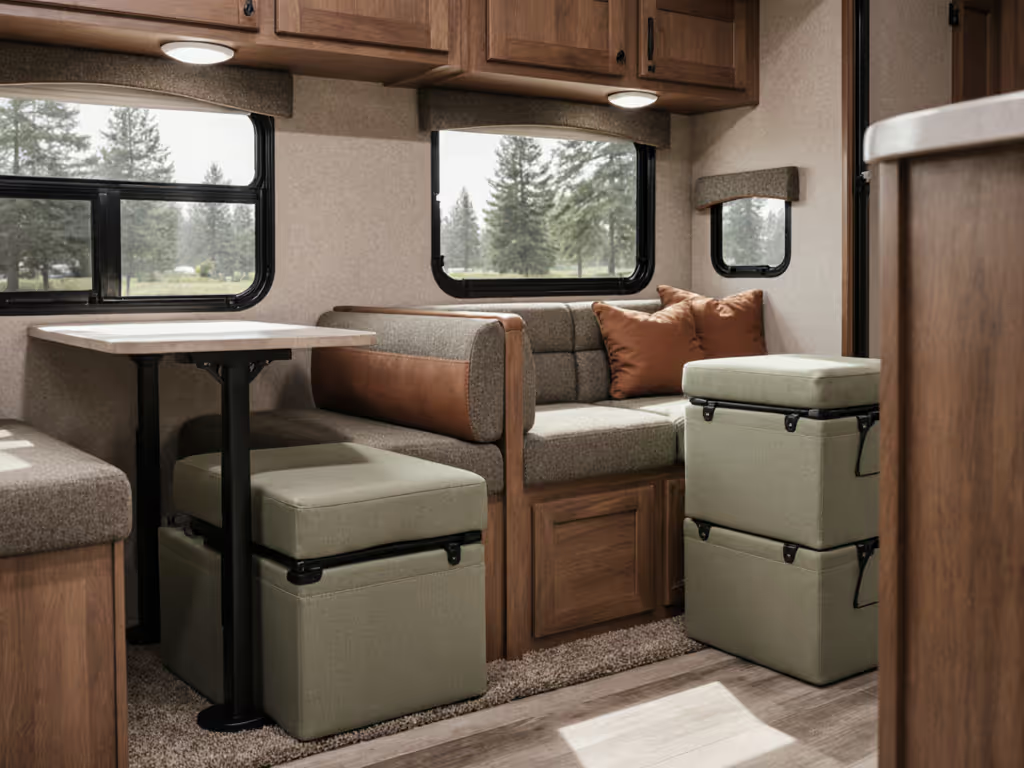
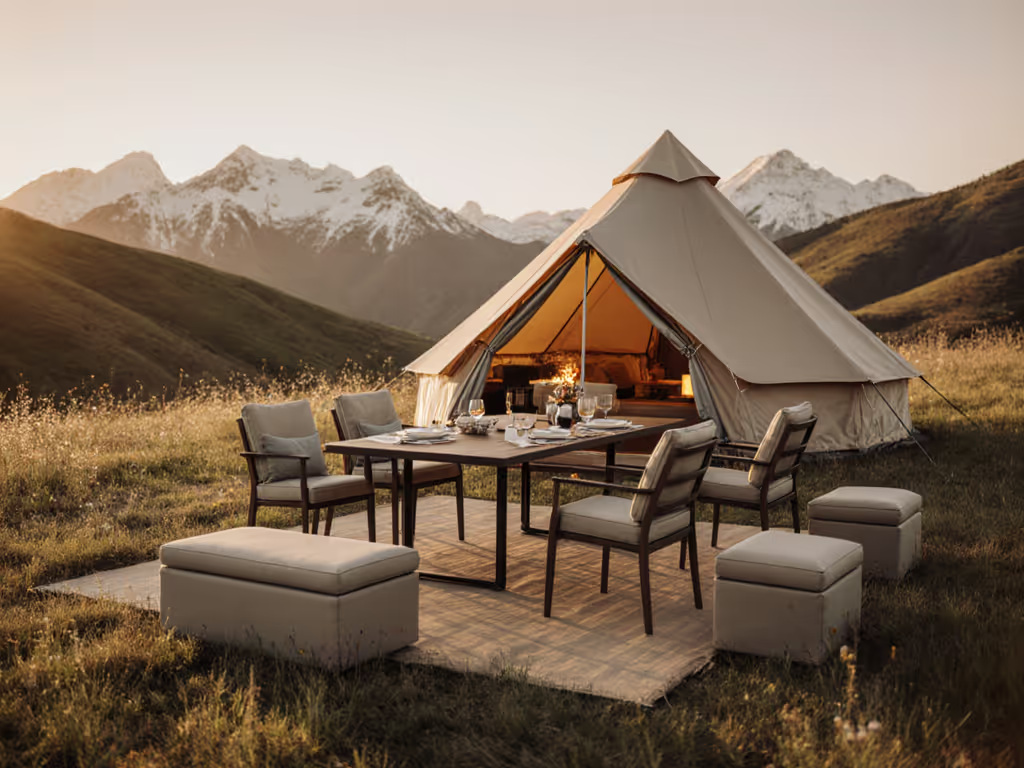
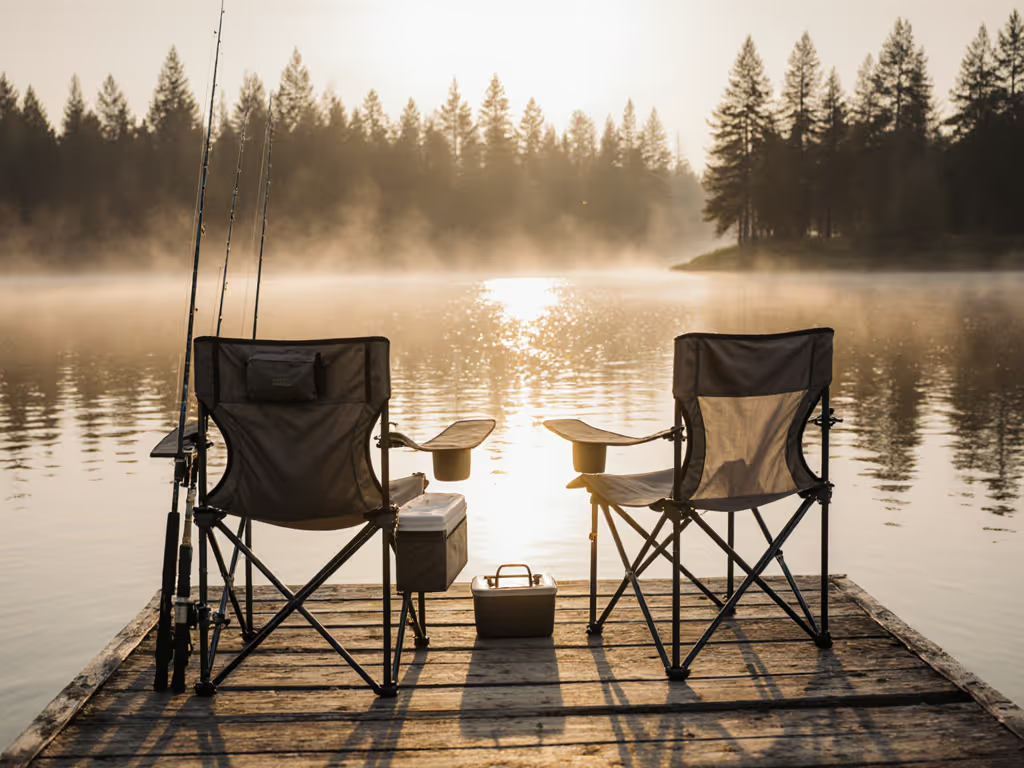
Best Camping Chairs for Anglers: Fishing vs General Models Compared
Compare fishing-specific and general camp chairs to pinpoint the features that prevent sinkage, resist corrosion, and keep gear accessible across mud, rock, and sand. Use trip-based recommendations to build a stable, organized seating setup for boat, hike-in, and family outings.
